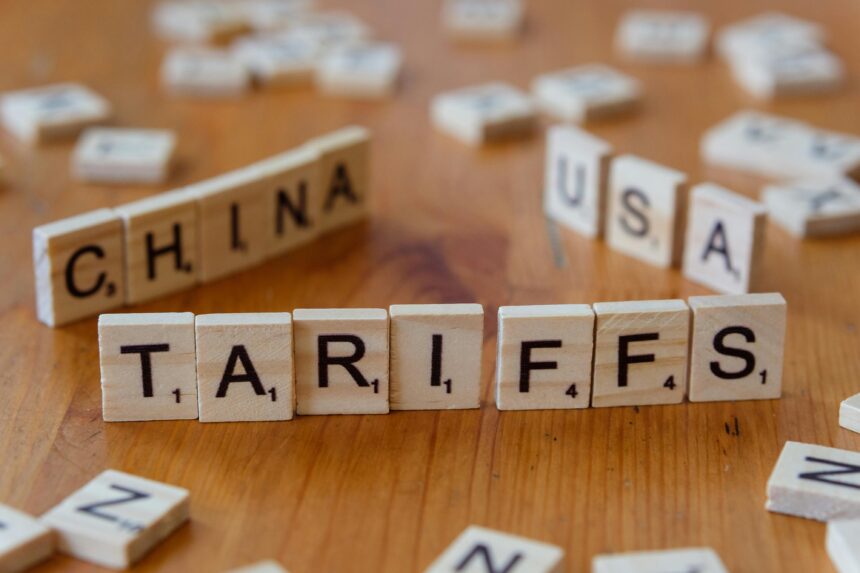Amid a steep rise in US tariffs on Chinese imports, many manufacturers in China have hit the brakes on production lines and scrambled to find new customers beyond the American market. Since the U.S. lifted its average duty rate on Chinese goods to 145%, cargo volumes have plunged by roughly 60%, cutting deep into export-driven revenue for factories along China’s coast Yahoo FinanceYahoo Finance. In response, companies once reliant on U.S. orders are now casting their nets wide—exploring markets in Europe, Southeast Asia, Latin America, Africa, and India—to offset the impact of President Trump’s trade war policies Forex Factory.
What follows is a look at why production has stalled, how factories are pivoting, and what this means for the future of global supply chains.
Why Production Paused
When the U.S. government announced triple-digit tariffs on Chinese-made goods in early April, the move immediately undercut profit margins across sectors from electronics to textiles Yahoo Finance. Factory managers describe an overnight evaporation of orders as U.S. buyers either canceled contracts or demanded renegotiations to offset higher duties Benzinga. In many coastal provinces, production lines stood idle as companies grappled with costs that made U.S. shipments effectively unprofitable South China Morning Post.
Impact of Tariffs on Chinese Manufacturers
For the workers on the ground, the effects have been stark. Some small- and medium-sized factories have cut shifts and furloughed employees, while larger exporters report slashing capacity by up to 30% as they await new orders Benzinga. In Guangdong and Zhejiang, where U.S. orders once fueled bustling assembly halls, hundreds of thousands of workers have found themselves on unpaid leave or searching for temporary jobs Business & Finance News. A factory owner in Guangzhou described the mood as “hopeless,” saying that after decades of building expertise around American buyers, “we didn’t know where else to turn” AP News.
Searching for New Customers
With the U.S. market off-limits, Chinese exporters are accelerating efforts to diversify. In the renewable energy sector, shipments of solar panels and lithium-ion batteries to emerging economies now make up 43% of total clean-tech exports—up from 24% in 2022—in markets such as Pakistan, Brazil, and Uzbekistan Financial Times. Textile and garment producers are eyeing Southeast Asia and Latin America for lower-tariff entry, while electronics assemblers are forging partnerships in India to leverage local distributors and mitigate shipping costs Business & Finance News. Even U.S. pharma firms with Chinese supply chains are reporting selective tariff exemptions—highlighting how businesses are lobbying to keep critical goods moving despite broader trade tensions Reuters.
Strategic Responses
Relocating Production
Some Chinese multinationals are taking a more radical approach: establishing plants in ASEAN countries and even the United States itself to circumvent steep duties South China Morning Post. Petrochemical, toy, and tool manufacturers have announced joint ventures in Vietnam, Thailand, and Mexico, betting that proximity to end-markets will shield them from sudden policy shifts.
Embracing Higher Value-Add
Other firms are doubling down on automation and design innovation to move up the value chain—producing higher-margin components and finished products rather than simple assembly Benzinga. By focusing on R&D and brand development, these companies hope to cultivate new international customers willing to pay premium prices.
Broader Implications for Global Trade
The ripple effects of tariff troubles extend well beyond factory floors. U.S. retailers like Walmart and Target are already warning consumers about empty shelves and higher prices this summer, citing the tariffs as a key factor Yahoo Finance. Meanwhile, international shipping rates have spiked as carriers reroute cargo to avoid punitive duties, fueling concerns over further supply-chain bottlenecks.
Financial markets have felt the strain as well: China-focused ETFs dipped over 2% in April trading sessions, reflecting investor unease about the potential for prolonged export declines The Guardian.
Looking Ahead
While the Trump administration maintains that its tariff policy will ultimately benefit U.S. manufacturing and taxpayers, China’s factories are already writing a different narrative—one of urgent adaptation and diversification. Whether through forging new partnerships in Asia, expanding into Africa, or even relocating production entirely, these companies are rewriting their business models in real time.
For global supply chains, this represents a tectonic shift. Companies that once viewed China as the undisputed “world’s factory” are now hedging their bets, blending production footprints across multiple countries and seeking stability in a volatile trade environment. As factories press pause on traditional orders and pivot toward new customers, one thing is clear: the era of relying solely on the U.S. market for Chinese export growth may be coming to an end.
Read Also: Top 10 Largest Economies in the World by 2025: India Eyes 3rd Spot






